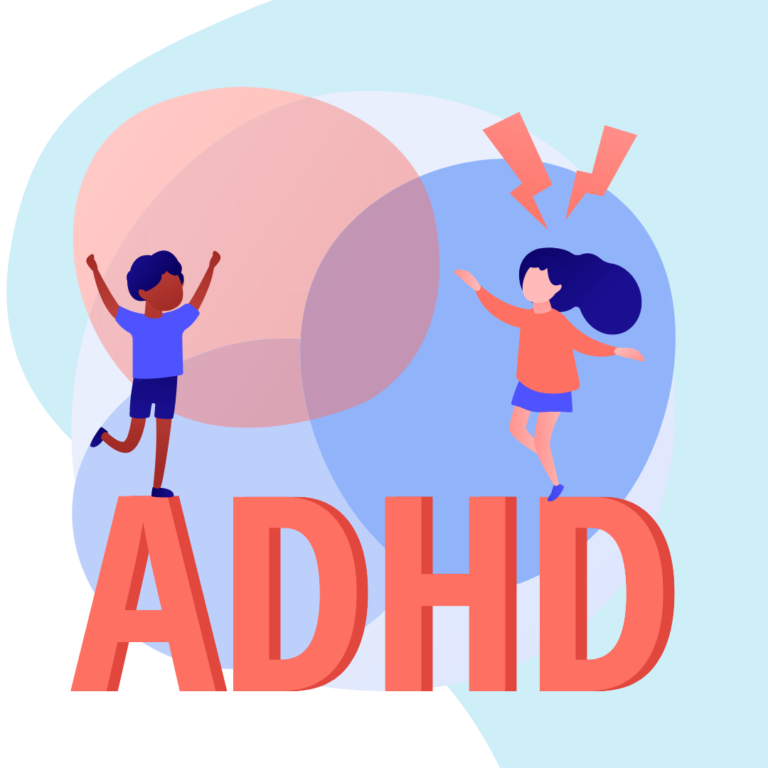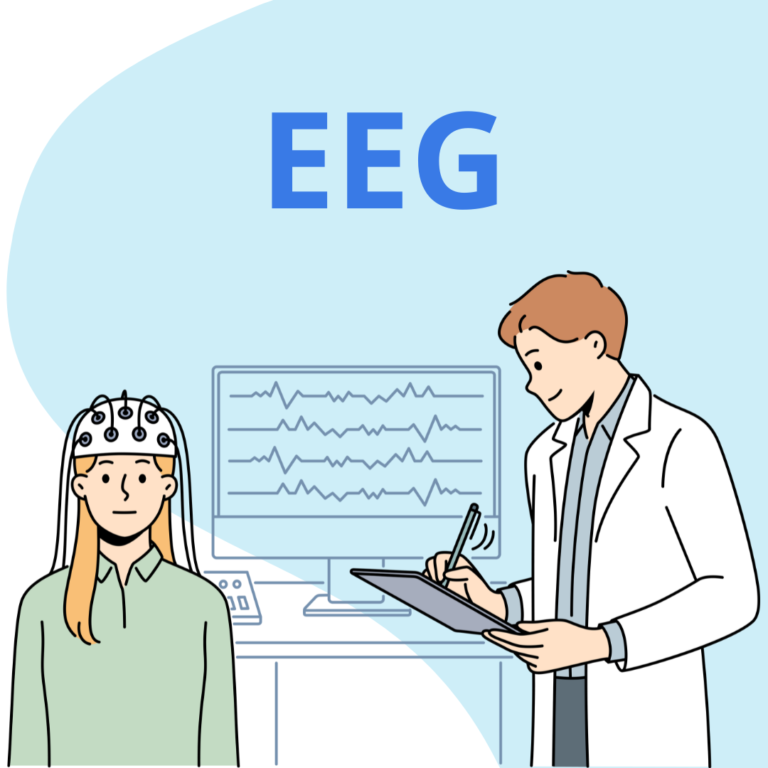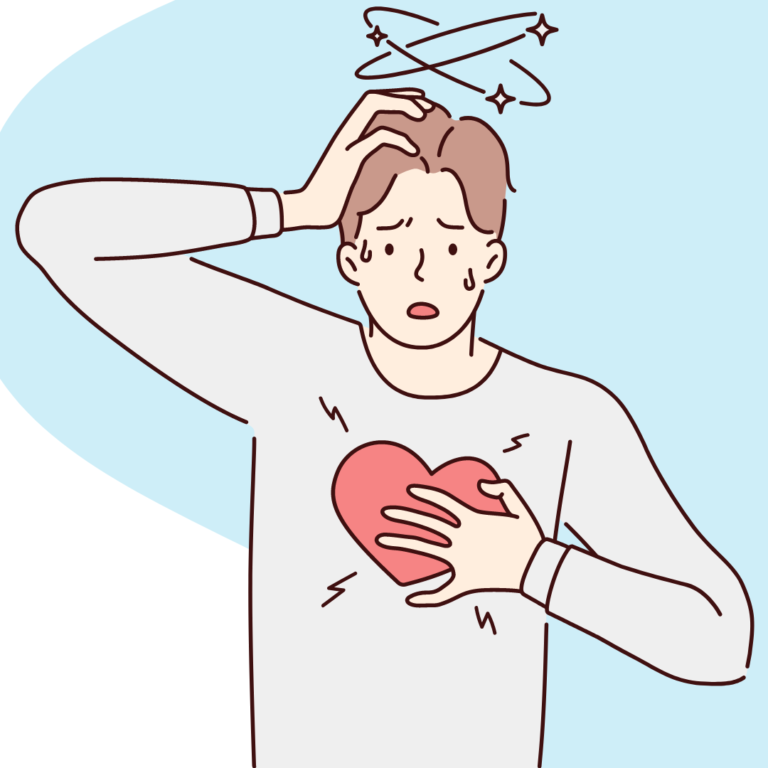The differential diagnosis of epileptic seizures is very important because epilepsy is a chronic disease that requires constant care and, unfortunately, causes a sense of stigma in the child and his family. Therefore, it is important to know about other seizure-like illnesses and to rule them out before diagnosing epilepsy.
Table of contents
First of all: correct diagnosis
In Europe, the prevalence of epilepsy in children is estimated to be 4-5%. A study in Denmark found that 39% of children diagnosed with epilepsy were misdiagnosed, and about 47% of these diagnoses were for non-epileptic seizure disorders. Misdiagnosis affects family life, education and many economic factors. The child’s absence from school, the parents’ restriction of work activities, and the child’s restrictions on career and occupational choices lead to irreversible damage. Therefore, it is important for physicians to evaluate each element of the history very carefully in order to make an accurate diagnosis. The purpose of this article is to discuss the clinical manifestations, treatments, and differential diagnosis of non-epileptic seizures and to raise awareness of their prevalence.
What are non-epileptic seizures and how to diagnose them properly?
Non-epileptic seizure occurring in childhood are a complex group including recurrent intermittent motor disturbances, behavioral changes, and somatic symptoms. They may be associated with a variety of signs and symptoms, including syncope, loss of consciousness, headache, vomiting, dizziness, abdominal pain, irregular breathing, sleep disturbances, and emotional and psychiatric problems. These repetitive events with sudden onset and end, lasting seconds or minutes, can occur at any age, and most importantly, can be misdiagnosed as epilepsy and treated unnecessarily. In non-epileptic seizures, no changes in the electroencephalogram (EEG) recording are observed during the seizure. Occasionally, the duration, location, type, and timing of episodes and the patient’s state of consciousness may suggest to physicians the correct diagnosis. In this case, differential diagnosis (establishing the disease by excluding others with similar symptoms) is possible by visualizing the episodes through video recording and simultaneous EEG evaluation (video-EEG).
Here are examples and a guide to help you understand what the differential diagnosis of seizures and other neurological events is, how to recognize elements in the history that will help differentiate whether a disorder is an epileptic seizure or not, and how to know what initial diagnosis is necessary to conduct treatment.
Tremor attacks
Patients experiencing these events experience moments of tremor lasting seconds, that may occur sporadically or repeatedly throughout the day. They occur most frequently in infants 6 to 15 months of age and do not cause loss of consciousness.
These events are behavioral in nature (response to environmental stimuli), and differential diagnoses include seizure or tics.
Longer episodes, rhythmic seizures, changes in consciousness or awareness, and changes in skin coloration are considered red flags.
A video recorded at home is often enough to make a diagnosis and no tests are needed. No treatment is needed for these incidents, and the prognosis for the child is excellent.
Affective respiratory spasms
During these episodes, the child appears to be out of breath, usually after a surprising, frustrating, or painful event. The child’s skin may be pale or purplish, and there may be mild tonic or tonic-clonic movements. Return to normal functioning occurs within a few minutes. This behavior usually occurs in children between the ages of 6 months and 2 years.
Although they may appear to be seizures, these episodes are a physiological response.
Some factors to consider include the absence of a trigger, increasing frequency of episodes, movement patterns suggestive of a seizure, a very young age of onset, and the coexistence of developmental delay in motor and intellectual functions.
Children who exhibit these symptoms may require an EEG. However, this test is not necessary in most cases, nor is a treatment.
As they get older, almost all children stop holding their breath and it has no neurological consequences.
Bening paroxysmal vertigo
During these episodes, the child, usually between 1 and 2 years old, may suddenly lose balance and fall. The child may become pale, vomit, or cry, but maintain consciousness. The events last several minutes.
These seizures are considered an early manifestation of migraine. Differential diagnoses include meningitis, CNS tumors, epilepsy, head injury and concussions, syncope, and cardiac arrhythmias.
More concerning are events that do not resolve and are not episodic, include loss of consciousness, exhibit other neurological symptoms such as seizures, adynamia or hearing loss.
Tests recommended for children showing these symptoms may include a brain MRI, ENT evaluation, or EEG.
These episodes are usually not progressive, but indicate the likelihood of migraine in the teen and adult years.
Childhood masturbation
This is a phenomenon that may include dystonic posture, grunting, swaying, and sweating. Usually occurring in children between the ages of two months and five years, these events may occur sporadically or repeatedly throughout the day. It is estimated that developmental masturbation occurs in up to about 40% of children.
Children’s skin may change colour and they may appear tired after the event.
As the red flags for this behavior are considered unresponsiveness, tonic-clonic movements, or cyanosis, and the differential diagnosis is focal onset seizures.
A video recorded at home is often enough to make a diagnosis and no tests are needed. No treatment is needed for these incidents, and the prognosis for the child is excellent.
Spacing out
These episodes occur in children of all ages, but are common in children with autism. Stare-outs may look like daydreaming or inattention, but the child’s attention can easily be redirected during these episodes.
Often the events have a behavioral basis or are related to frontal lobe activity. Differential diagnoses include absence-type seizures or focal onset seizures with impaired consciousness. Of more concern are episodes in which children do not respond to attempts to get their attention, exhibit behavioral changes, or have accompanying transient cognitive impairment.
Tests include EEG, neuropsychological evaluation for learning disabilities and cognitive abilities, or psychological evaluation.
If necessary, treatment may include behavioral therapy or stimulant medications (used in ADHD treatment).
Overall, the prognosis for the child is usually very good. Children with ADHD generally have a good prognosis, but may have a variable response to treatment with stimulant medications. The prognosis for people with learning disabilities depends on severity, school environment, and other educational factors.
Reflux
Occurs in younger infants, from birth to six months of age and often manifests with twisting movements and writhing. Episodes usually do not occur suddenly. During episodes, the baby’s skin may be reddened.
Children prone to these events may have low muscle tone that contributes to muscle relaxation at the esophagus-gastric junction.
The differential diagnosis includes seizures, infantile tremor or movement disorders, and signs that one should be concerned about include lack of association with feeding, stereotyped movements such as arching or sudden assumption of the embryonic position, and cyanosis.
Investigations include: clinical diagnosis, further investigations after low muscle tone is found on examination, sometimes upper gastrointestinal studies, EEG or video-EEG monitoring.
Treatment includes H2 blockers or proton pump inhibitors.
Patient prognosis is generally very good, and symptoms resolve with time. However, for children with severe gastrointestinal pathology or neuromuscular conditions, the prognosis is uncertain.
Tics/Tourette’s syndrome
These episodes involve paroxysmal twitching of a single muscle or a group of muscles, but rarely involve larger muscle groups. Although recurring, they are not usually rhythmic or prolonged. They do not cause a fall and usually do not limit the child’s activities in any way.
They can occur at different ages, and older children may describe them as a feeling of urge to perform a particular movement. Vocal tics include grunting, humming, muttering, and snorting, but they rarely produce words.
The differential diagnosis includes myoclonic seizures. Disorder of consciousness, inability to suppress episodes, onset during sleep, rhythmic and recurrent episodes are alarm symptoms.
Testing includes a clinical diagnosis, EEG, or screening for ADHD, OCD, or other behavioral disorders. A psychological evaluation is often necessary.
For most children, require a treatment of tics is not required, unless the behavior interferes with their ability to function or socialize. Psychotherapeutic interactions and medications – alpha2 adrenergic receptor agonists (clonidine) or neuroleptics (haloperidol, risperidone) may prove helpful.
For most children tics stop appearing on their own.
Stereotypies
These episodes, usually occurring in early childhood after a child is one year old, are characterized by repetitive stereotyped movements that may or may not be rhythmic. Examples include waving the arms or swaying. The events may remain to adulthood, especially in patients with autism or intellectual disabilities.
These events are behavioral in nature, but the differential diagnosis is automatisms with seizures of focal onset.
The red flags include disorders of consciousness, which can be difficult to detect in case of children with autism.
Tests include an EEG, and the treatment of choice is psychological therapy; the prognosis is good.
Sleep terrors
These episodes are more common in children around age of three, but can occur earlier and persist into the teen years and adulthood.
The patient may awaken from a deep sleep screaming and showing decreased reactivity. They may tremble while doing so, and episodes may occur several times during the night.
The exact mechanism of their formation is unknown, but sleep terrors may have a genetic basis.
Differential diagnoses include nightmares, agitation disorder, or parasomnias. Episodes are more worrisome if they occur multiple times a night, involve strange, repetitive movements such as pelvic thrusting or bicycle pedaling, or are accompanied by progressive deterioration in learning or development.
Studies include clinical history and diagnosis, polysomnography or video-EEG.
Most children grow out of sleep terrors and do not require treatment, but they may benefit from counseling to improve sleep quality or help from a psychologist.
Syncopes
These events are more common in adolescent patients. They include sudden and brief loss of consciousness, usually accompanied by loss of muscle tone. Patients may fall or lean forward or backward excessively and have mild seizures in the process. They may also experience photophobia, a feeling of dazedness, or darkened vision.
The loss of consciousness lasts only a few seconds, then they may feel dazed but not disoriented.
Recovery is rapid, and episodes usually have a trigger: standing up too quickly, standing still too long, dehydration on a hot day, fear, defecation or urination.
A common feature of episodes of syncope is decreased cerebral perfusion (blood flow). The differential diagnosis includes seizures of focal onset or other types of seizures, as well as postural tachycardia syndrome.
The red flags include absence of a provoking factor, prolonged and prominent tonic-clonic or clonic movements, cyanosis – occurring among very young children or those with neurologic or developmental disorders.
Testing includes diagnosis based on clinical history, measurement of orthostatic blood pressure, EEG if the red flags are present, and Holter ECG, tilt test, or cardiology consultation if the patient’s clinical history indicates cardiac arrhythmias.
Treatment includes symptom avoidance counseling, including standing up slowly, drinking water and avoiding triggers.
Predisposition to syncope may persist into adulthood. Episodes do not cause a neurological deficit, but the patient may suffer a fall injury.
Cyclical vomiting
These episodes include one to five days of profuse vomiting followed by asymptomatic periods. The average age of patients is five years, but episodes can range from infancy to adulthood.
They usually begin in the early morning or late afternoon. Episodes are accompanied by abdominal pain, lack of appetite, lethargy, pallor, sweating, and salivation.
Triggers include emotional stress, certain foods and menstruation.
To make the diagnosis, the patient must have stereotyped episodes of vomiting with at least two acute episodes in the past six months, each occurring at least a week apart and lasting less than a week.
The red flags include periods of impaired consciousness, co-occurring tonic-clonic movements, vision changes, other neurological symptoms such as hemiparesis, sensory disturbances, and hematuria.
Ests include MRI or gastro- and colonoscopy.




